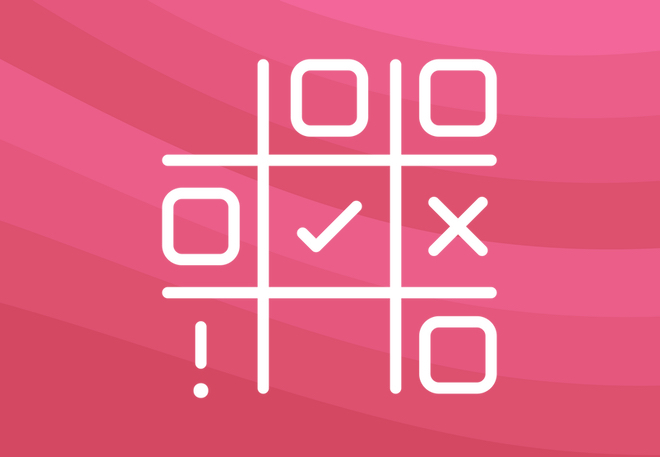
What does looking at students' workbooks tell us about the quality of education?
To answer this, here are two important definitions to keep in mind:
- Learning is a change in long-term memory
- Progress is remembering and knowing more.
These definitions may guide observers to ask: 'Are students learning and making progress?'.
Answering these questions reliably, however, relies on various observers agreeing on what workbooks tell them about the answers to these questions. With this in mind, two further questions arise: 'What can and can't be seen in students' recorded work?' and 'What can be reasonably inferred?'. These questions involve all observers keeping the definitions of learning and progress in mind. If, for example, learning is a change in long-term memory, how can this be seen in workbooks? School inspectors in England (Ofsted) conducted research (1) into this and found four areas of focus that give reliable answers:
- Building on previous learning
- Breadth and depth of coverage
- Progress
- Practice.
Although it is impossible to tell from looking at students' workbooks whether students remember and know the content covered, these four areas provide solid and reliable indicators.
Here are some tips for making judgements about the first area, building on previous learning.
How does work build upon the content covered :
• earlier in a topic?
• in previous topics in the current school year?
• in previous topics in previous school years?
To answer the first of these questions, begin by looking at curriculum expectations. The example below shows expectations for two geography lessons:
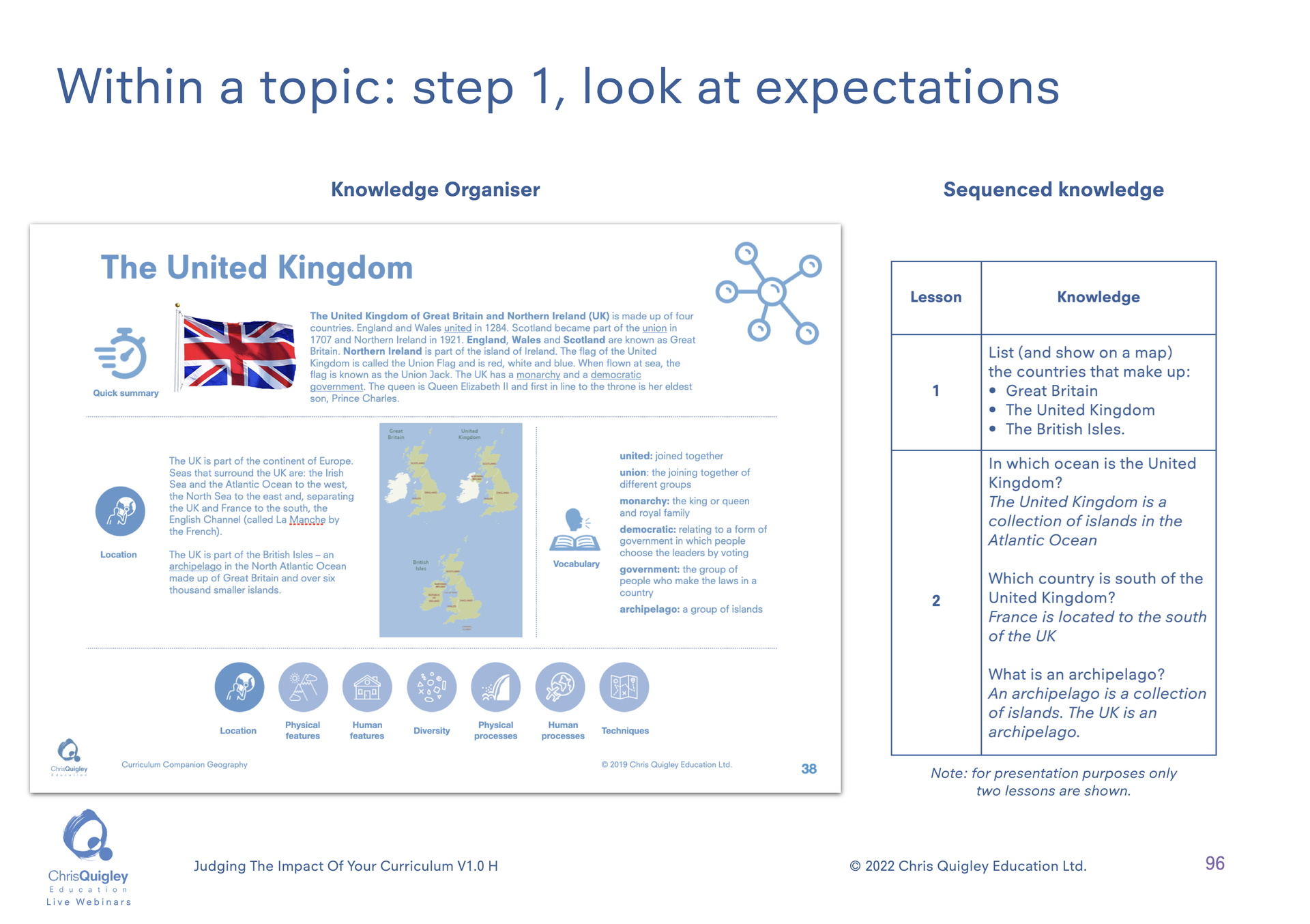
The knowledge is sequenced logically and is clear and specific. The observer may then see if students' work matches these expectations. The example below shows a student's work from each lesson, along with the teacher's notes:
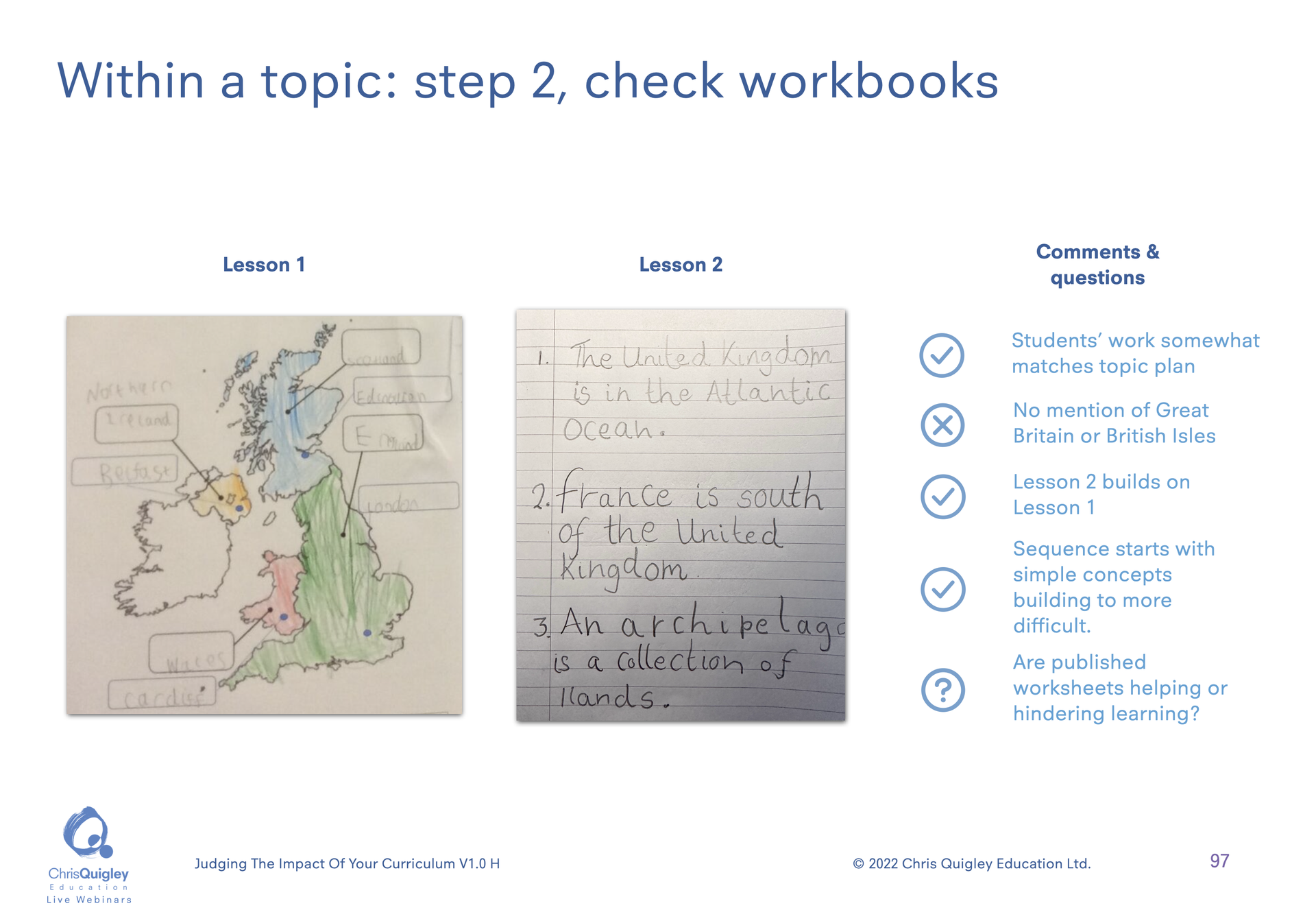
To answer the second question, check the schema map:
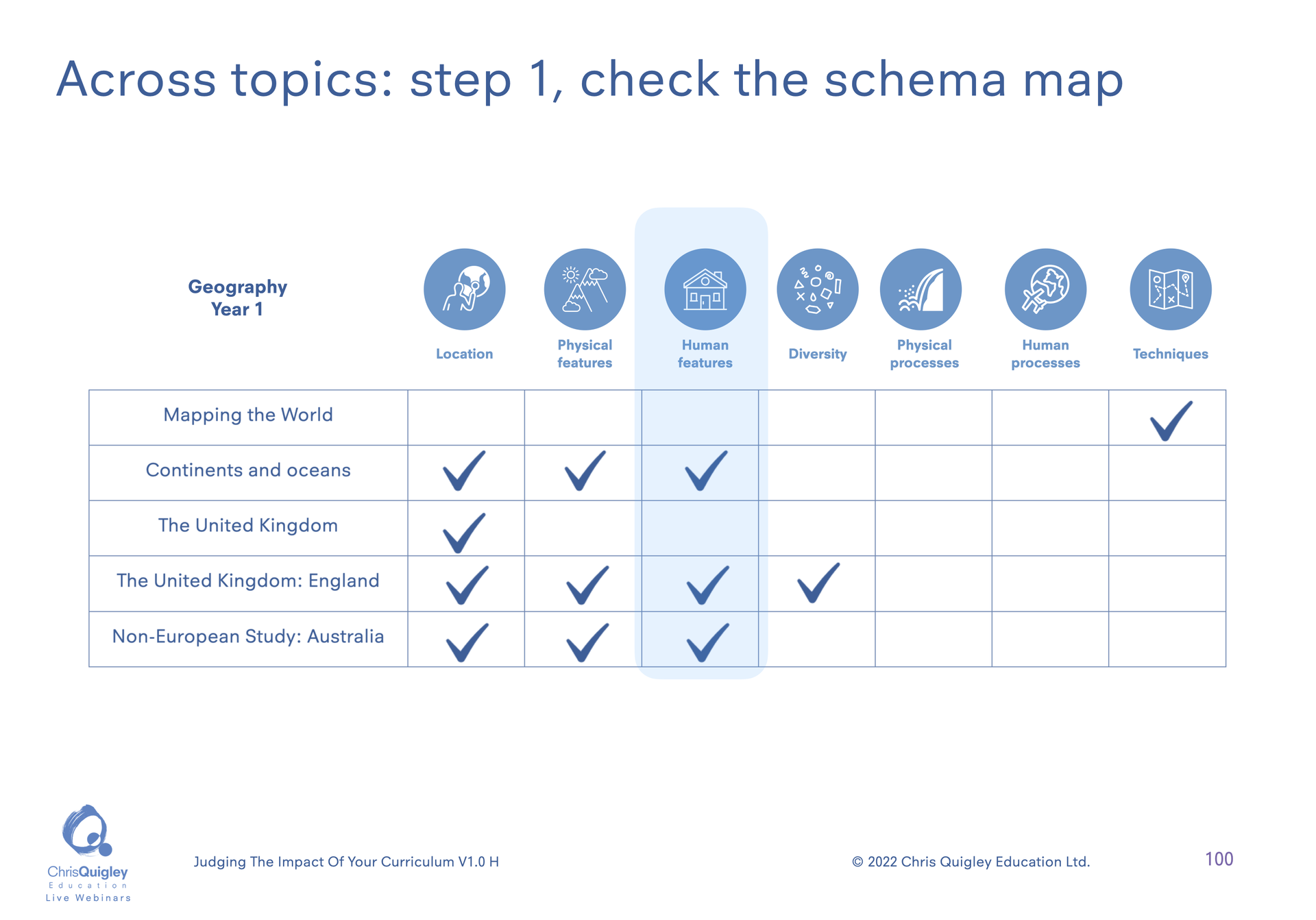
Then, look at how the student's work makes links to the schema:
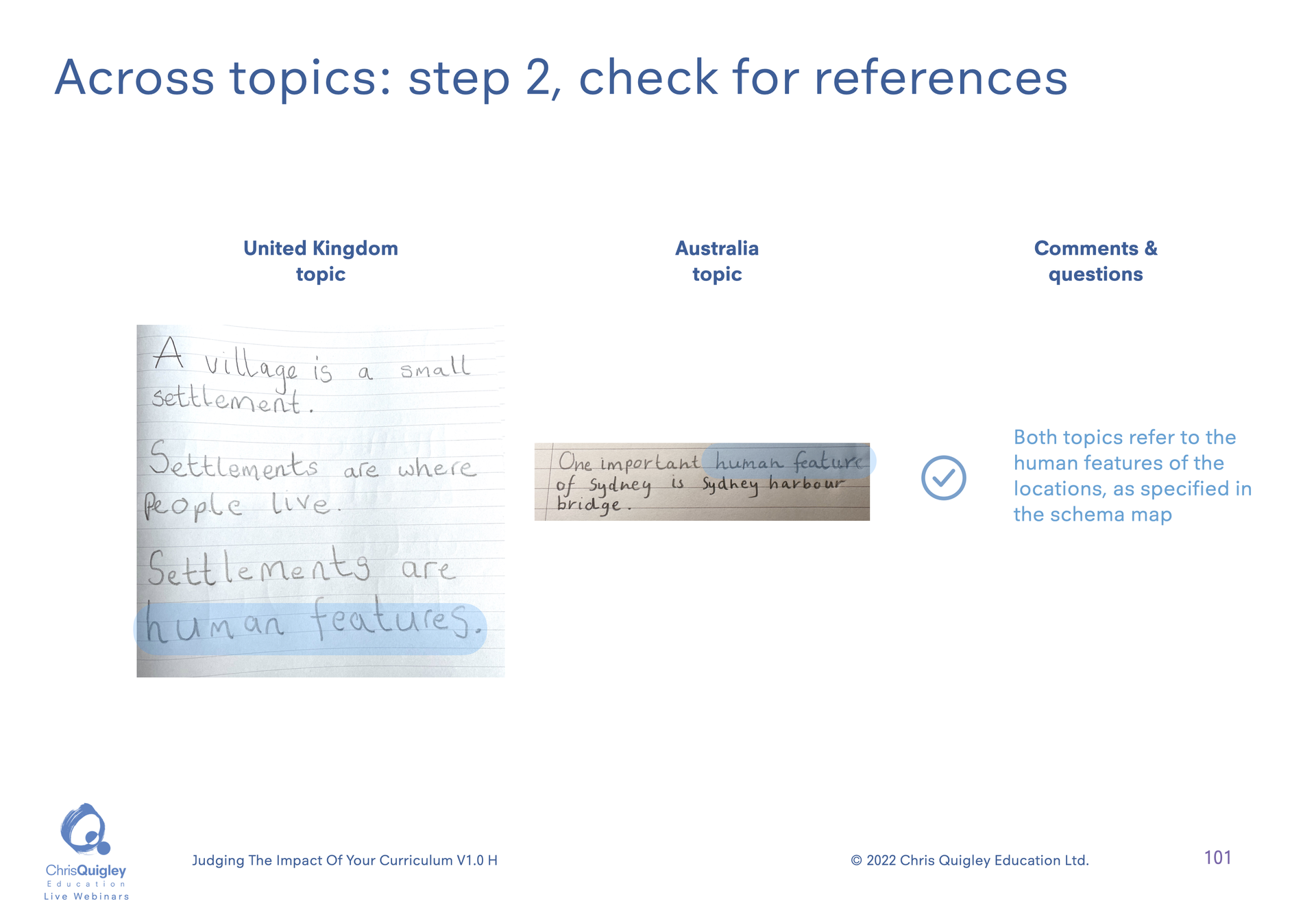
To answer the third question, use an area of the schema to look at two students - from different year groups - work:
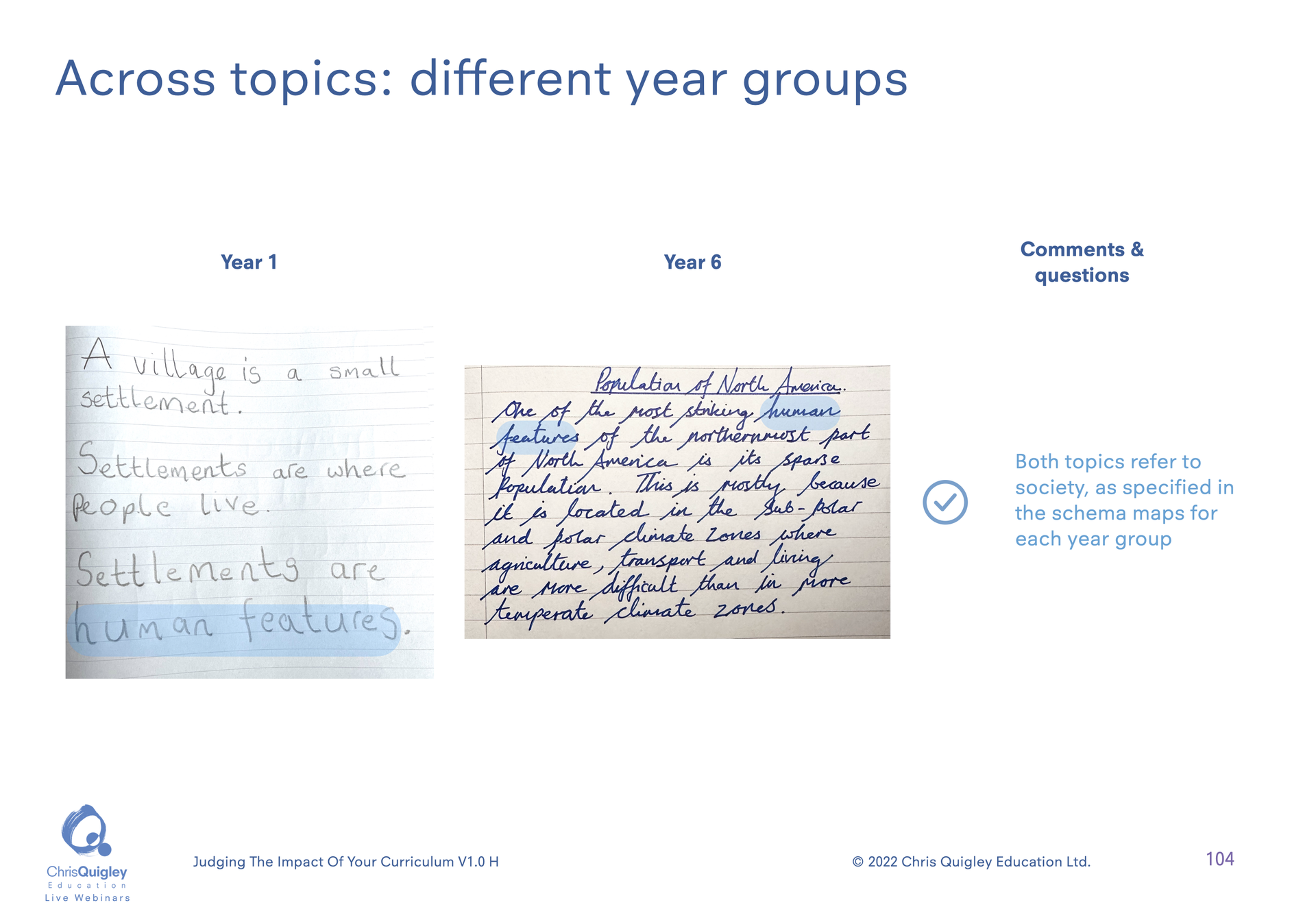
Click here for a free rubric to help assess how work builds on prior learning.
For more tips on looking at students' workbooks, check out our course Judging the Impact of Your Curriculum, either on-demand or via our Live Webinar
References:
1. Inspecting education quality: workbook scrutiny Ofsted, Ref: 190028.
.png)

